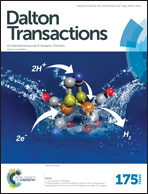Hierarchical ternary Ni–Co–Se nanowires for high-performance supercapacitor device design†
Abstract
Large-scale uniform Ni–Co–Se bimetallic ternary nanowires have been successfully synthesized through a successive cation exchange. First, NiSe nanowires in situ grown on nickel foam (NF) were prepared by a facile solvothermal route. Next, a series of ternary materials possessing different proportions of Ni and Co were fabricated by a Co-exchange method using the Ni@NiSe material as a template, which effectively achieved morphological inheritance from the parent material. To explore the electrochemical performance, all synthetic materials were assembled into asymmetric supercapacitor devices. Among asymmetric supercapacitor devices, the Ni@Ni0.8Co0.2Se//active carbon (AC) device exhibited a high specific capacitance of 86 F g−1 at a current density of 1 A g−1 and excellent cycling stability with virtually no decrease in capacitance after 2000 continuous charge–discharge cycles. This device still delivered an energy density of 17 Wh kg−1 even at a high power density of 1526.8 W kg−1. These superior electrochemical properties of Ni@Ni0.8Co0.2Se as an electrode material for supercapacitor devices confirmed the synergistic effect between Co and Ni ions, suggesting their potential application in the field of energy storage.



 Please wait while we load your content...
Please wait while we load your content...